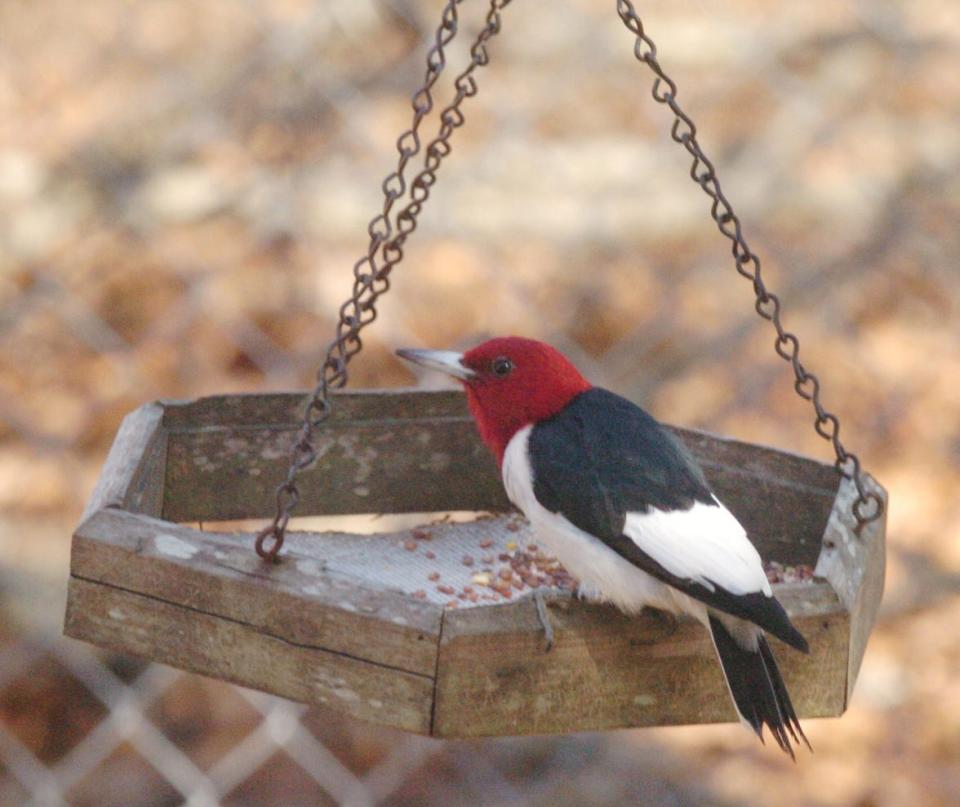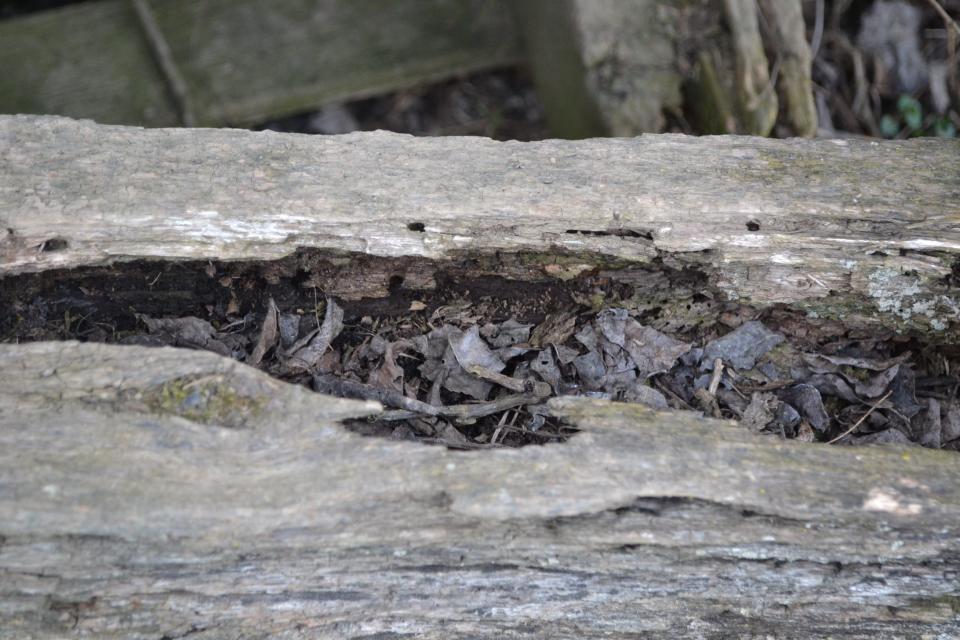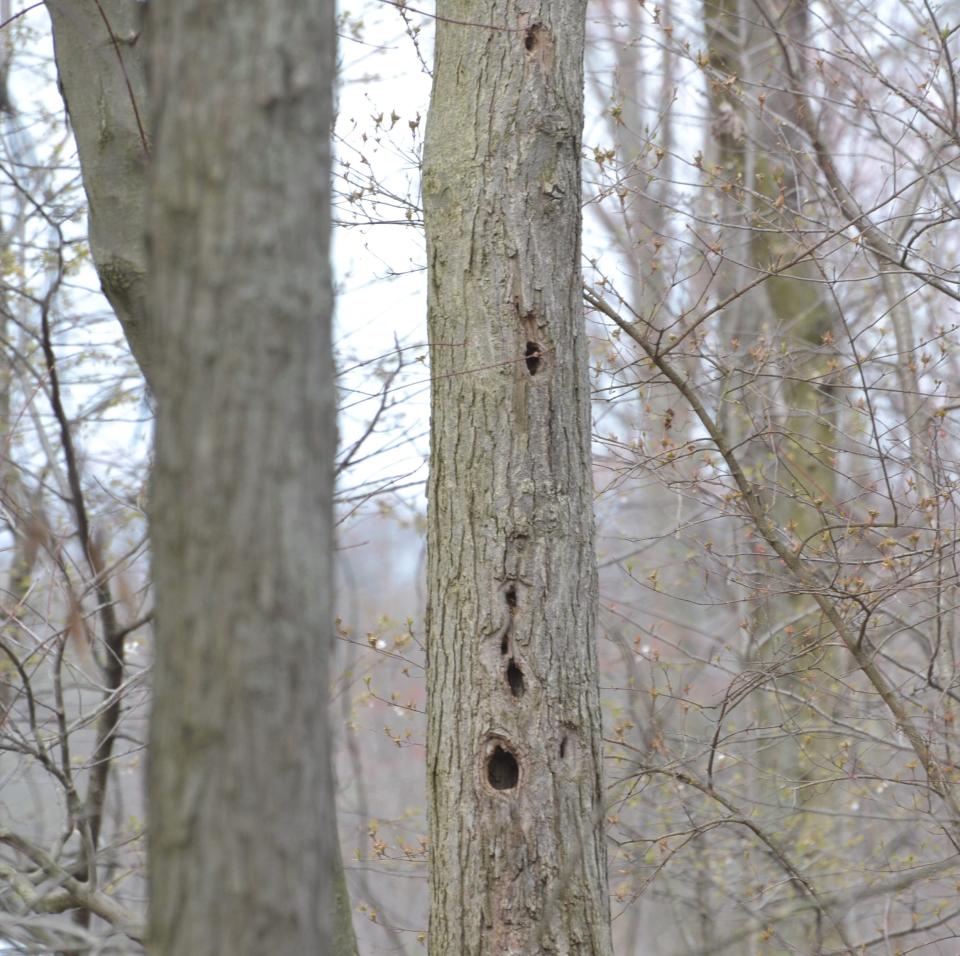A Stroll Through the Garden: Preventing woodpeckers from damaging your barn
I have been feeding woodpeckers suet this winter. A while ago, when I was at Home Depot picking up a shovel for a job, I heard a person ask how to solve the problem of a woodpecker leaving holes in the barn. One of my readers was standing there and asked if this problem could be solved organically. These folks couldn’t tell me the type of insect at which we were looking.
For at least 20 winters I have been feeding the birds at my home. One of my normal companions during this time frame is an insect eater − a huge red-headed woodpecker. I saw him maybe a handful of times this year. He really likes the peanut butter and suet cakes I put out on a tree in my front yard. I have been feeding a few generations of woodpeckers.
When this large bird flies onto the tree feeder, the rest of the birds scatter to other shrubs and trees. The woodpecker acts sort of like the boss bird at the feeder. If you compare the woodpecker to the tiny sparrow, it's no wonder why they scatter. Woodpeckers feed primarily on beetles, grubs and ants when they start their hammering with their beak and make some noise.

The other side of the story is the insect the woodpecker is feeding on the wood in the barn. Suspects that may have caused this damage are fairly limited from the very start. Among the culprits are termites, powder post beetle, carpenter ants, round-headed borers, carpenter bees and sawflies. Fact of the matter is there are only two types of these insectson a woodpecker’s menu. Woodpeckers pursue only the beetles and the ants, which will narrow down how you would address the pests. One of the challenges to knowing how to properly treat any pest problem is that you need to identify the pest as closely as possible. If you don’t identify the insect, you may not adequately treat the problem.
Barns are normal magnets for pests
Barns are normal magnets for these pests. This mean you may be looking at either of these insects even at this point. If you can, remove the infested wood. If you have powder post beetles, replace the infested wood with wood that is treated with material that is resistant to beetle and ant damage. You also can treat the wood near the infested area with insects by painting a compound that has chlorpyrifos − or Boracare or Timbor − which are very toxic.

Diatomacous and boric acid can help destroy nests. There are a number of botanical insecticides less toxic than traditional chemicals. Then paint the unfinished wood with a coating of paint, shellac, varnish, paraffin wax or other wood coating. If you were to inspect your piles of unfinished wood around your house regularly and get rid of that wood, you will come close to controlling the problem.
Round head borers are a little different. You wind up with most of the same treatments but it can be more of a challenge. If you have not used kiln-dried wood to below 20% moisture and then treated, you may have the problem continuing. This may just be the start; you need to keep your eyes peeled for further infestation. I read that a crushed moth ball and vinegar mix has been used to kill these beetles when a container of this material is placed by the infested wood.

Carpenter ants are a little different. There is a compound called Ortho-Klor Ant Killer Dust. The infected areas around the bases of the building such as the baseboards, windowsills and door frames need to be treated with this compound. If possible, you should try to treat the nest. Logs, wood piles and stumps near any of these areas need to be removed. So that these insects don’t get back into the barn, you really should seal up as many of the paths into the barn as possible.
Ultrasonic repeller may be the best organic option
Recently I came across the ultrasonic woodpecker repeller that may be the best organic solution to getting rid of many different woodland pests, including woodpeckers. Imagine − chemical free, safe around people and environmentally safe. In 48 hours, this sound will get rid of a variety of pest, and you won’t have any problems with Fish and Wildlife Services for killing a woodpecker or other animal. Fines for killing a woodpecker can be as much as $2,000 or a jail sentence up to two years.

Fumigation may be the ultimate solution to the pest problems. Professionals should be brought in at this point and the dangers can be dramatic. Just like Kenny Roger’s said, "know when to hold them and know when to fold them." What I’m saying is, you need to know when to get a professional.

I hope you have a good stroll through your garden this week and see some early flowers. Woodpeckers can be a form of entertainment and a challenge. If you have a challenge, drop me an email at ericlarson546@yahoo.com. You can leave comments at ohiohealthyfoodcoop.org. Thank you for your participation in our column.
Eric Larson of Jeromesville is a veteran landscaper and gardening enthusiast and a founding board member of the Ohio Chapter of Association of Professional Landscape Designers.
This article originally appeared on Mansfield News Journal: Woodpeckers and how to prevent them from damaging your barn

